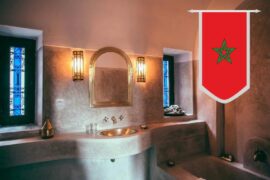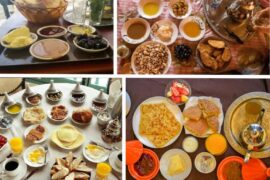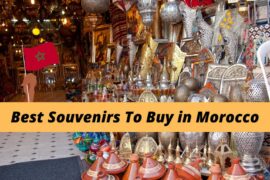The kingdom of Morocco has a rich cultural heritage and people still respect most of the old traditions which can be still seen for example at the Traditional Moroccan wedding ceremony.
The engagement:
The groom presents himself with his family to ask for the hand of his beloved from her father. Once the bride expresses her agreement, the two families begin to discuss the preparations for the marriage ceremony which is taken very seriously.
Then, the future groom offers jewelry, and clothes to his bride and the two families begin the necessary preparations for the wedding ceremony.
Marriage Conclusion:

Once the parents of the bride and the groom agree on the dowry (an amount of money) that the husband must give to the bride. Then, they go to the Adoul to conclude their marriage called in Morocco Drib Sdak. After that, the two families discuss in detail the wedding day (fixing the date of the wedding ceremony, the Neggafa (the traditional dresser of the bride and guardian of Moroccan wedding traditions), invitations preparation, guests’ list, dishes and cakes to be served to the guests,…etc).
Girls Henna Day:
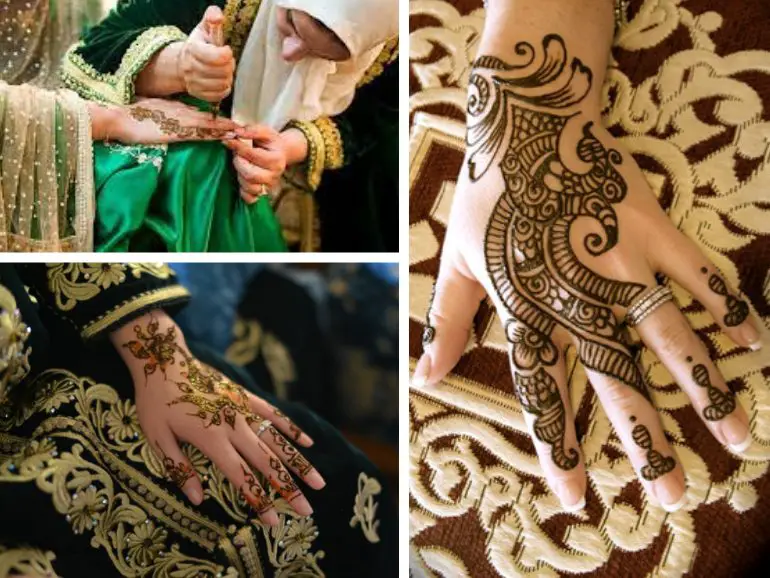
In general, the henna day is the day before the wedding feast and is celebrated mainly by the bride with her single female friends.
On the morning of Henna Day, the bride invites all her single close friends to go to the Hammam and attend her henna day with her to celebrate the end of her celibacy. Back from the Hammam, the Nekacha (experienced henna tattoo artist) applies henna to the future bride and her friends. The husband’s family takes Lahdiya (clothes, flowers, perfumes, slippers, pumps, dates, etc.) to the bride along with a traditional musical band called Dkaykiya who sing some folk songs from the groom’s home to the bride’s family house.
The Big Day – Wedding Ceremony:
The guests start coming to the wedding in the afternoon and they wait for the arrival of the bride and groom in the evening. Once arrived, the bride sits on the throne on a platform with her husband all evening and their guests greet, congratulate, and take souvenir photos with them. Throughout the evening, the brides change outfits several times using the Negaffa with the coordination of the musical orchestra.
NB: concerning the brides’ outfits, in general, the bride changes at least 7 times while the groom can change his clothes only 2 or 3 times during the whole evening.
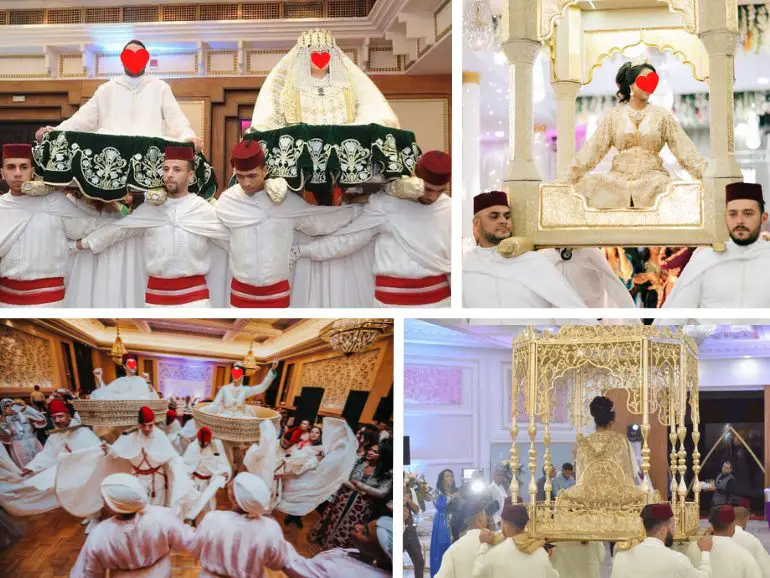
During the whole evening, the bride and groom set in a place dedicated to them called Lbarza. At a time decided by the Neggafa, they will have a tour around the place on the Aamariya (a large decorated seat) which is a tradition practiced in Moroccan weddings that consist of carrying the bride and groom separately on the shoulders of four men wearing traditional Moroccan clothes. Then, while they are on the Aamariya, they greet guests, and they may also throw flower leaves and small bags filled with sweets to guests.
At the Moroccan wedding ceremony, serving food is important and the guests are served Moroccan mint tea, cakes of all kinds, and dinner which can eventually be Bastila, grilled chicken, meat tagine with plums, fruits, drinks, …etc.

